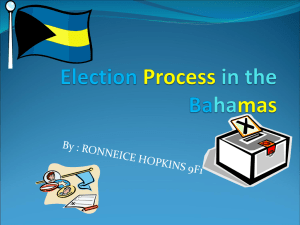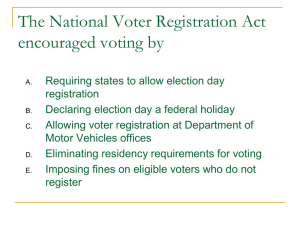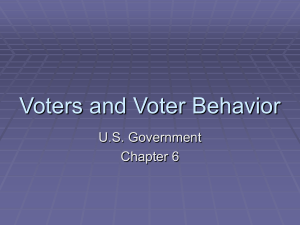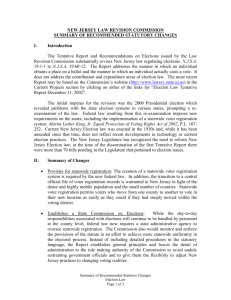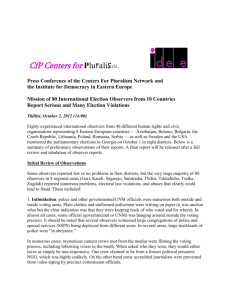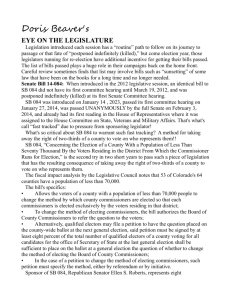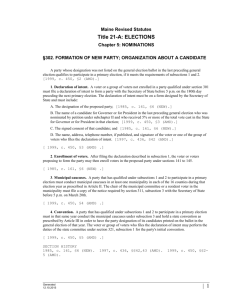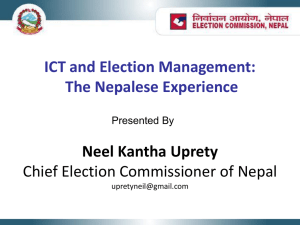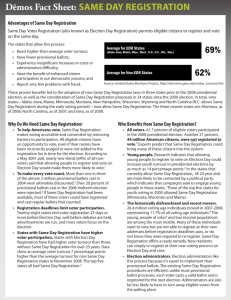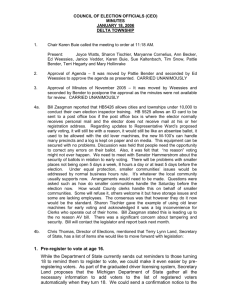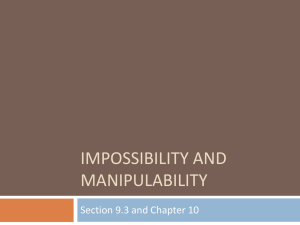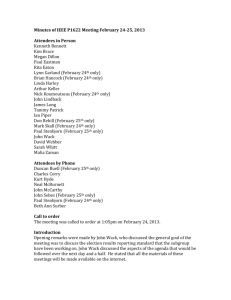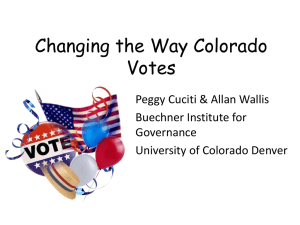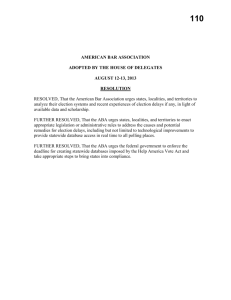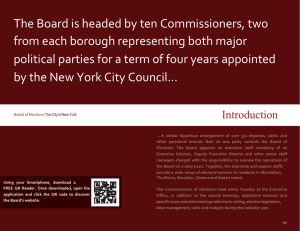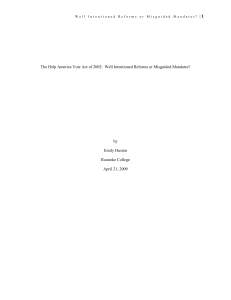Arrow`s Theorem (Activity 8)
advertisement
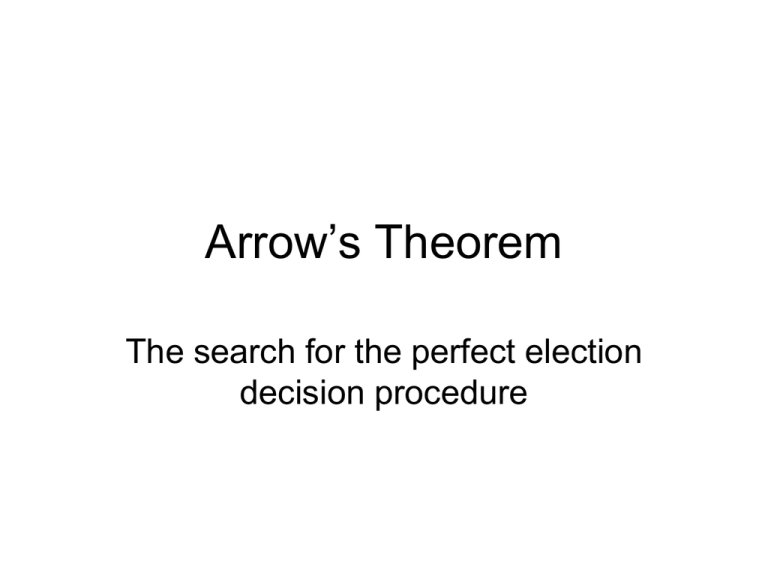
Arrow’s Theorem The search for the perfect election decision procedure The story so far… • We have studied several election decision procedures designed to produce one or more winners from a slate of 3 or more candidates. • Each procedure has had some desirable features and some undesirable ones (‘quirks’). • We’ve even seen that these methods can give different winners using exactly the same set of ordinal ballots! Enter Kenneth Arrow • Arrow, an economist, wanted to find a completely ‘fair’ election decision procedure. • He began by making a list of a few basic properties that he believed any good election decision procedure should have: Arrow’s Properties • Universality—The decision procedure must be able to process any set of ordinal ballots to produce a winner, and must be able to compare any two alternatives. • Non-dictatorship (no one voter can determine the outcome) • Independence-of-Irrelevant-Alternatives Criterion (Binary Independence) • Pareto Criterion IIA or Binary Independence • It is impossible for an alternative B to move from non-winner to winner unless at least one voter reverses the order in which he/she had ranked B and the winning alternative. • In other words, whether A or B wins should depend only on how the voters compare A to B, and not on how other alternatives are ranked relative to A or B. Pareto Criterion • If every voter prefers alternative X to alternative Y, then the decision procedure should rank X above Y. Asking the Impossible • In 1951 Arrow published a book Social Values and Individual Choice in which he proved that there does not exist an election procedure which ranks for society 3 or more candidates based on individual preferences and which satisfies the fairness criteria we have listed. Manipulability • Manipulability is voting insincerely in order to influence the election result. Example: You feel your top choice has no chance to win, so you vote insincerely by voting for your second choice, which you prefer over any other alternative. (Also called tactical or strategic voting.) Let’s look at a simple example… Manipulability at work Look what happens if the 3 C supporters vote for B! 49 47 3 A B C B C B C A A Activity 8, Exercise 1,2 12 Aerobics 5 10 Badminton Football 11 Softball Badminton Football Badminton Badminton Football Softball Softball Football Softball Aerobics Aerobics AerobicsA More Impossibility! • Gibbard-Satterthwaite Impossibility Theorem “For elections with at least 3 alternatives and ordinal ballots as in Arrow’s Theorem, any nondictatorial election procedure can be manipulated.” It is impossible to design a procedure where it is never in the voter’s best interest to vote insincerely (strategically)!! Approval Voting • You give every candidate that you find acceptable a vote. • The candidate with the most votes wins. • Works well for elections with several candidates and where more than one candidate can be elected (board of directors, hall of fame, etc.) A defect in Approval Voting • It is uncomfortably easy for any candidate to win 100 voters hate Bush, but Gore, Nader ok 100 voters hate Gore, but Bush, Nader ok 200 voters prefer Nader but Bush, Gore ok Vote totals?


